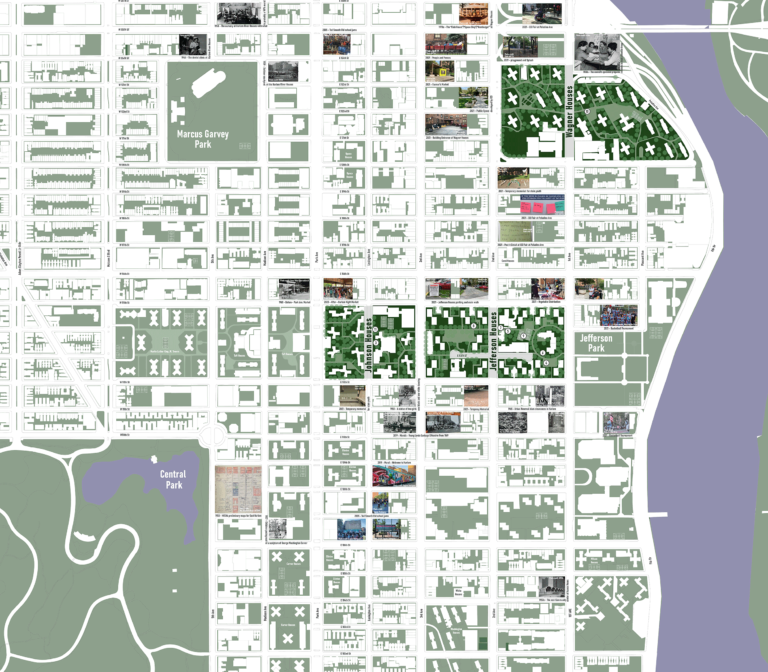Table of Contents
- Introduction
Case Studies
- Introduction
- Ed Roberts Campus
- Gallaudet University 6th Street Development
- Skyler
- Black Women Build
- New Swampscott High School and Senior Center
- Las Abuelitas Kinship Housing
- Side by Side
- Disability × Maternity: A Household User’s Manual for Young Mothers with Disability
- Carehaus
- 11th Street Bridge Park
- North Philly Peace Park
- Table Top Apartments
Aging Against the Machine
Block Party: From Independent Living to Disability Communalism
Decolonizing Suburbia
Re:Play Reclaiming the Commons through Play
About the Reading Room
Our Home
NYCHA is home to one in every 15 people in New York City, spread across 300 public housing developments across the city. Together, its properties have a population as large as the city of Boston. If you don’t live on a NYCHA campus, then one is likely to be your neighbor.
For over forty years, racially biased disinvestment has undermined NYCHA’s ability to sustain even basic maintenance. In this context, the needs of aging building infrastructure have overshadowed those of the shared landscape.
Physical disinvestment has profound social implications; deterioration is psychologically as well as physically punishing. It impacts universal accessibility, community self-respect, and aspiration. As one young resident put it, “It has warped our idea of normalcy.”
The map identifies three public housing campuses in East Harlem—Thomas Jefferson Houses, James Weldon Johnson Houses, and Robert F. Wagner Houses—that are home to the young residents who participated in the workshops, all of which report a high incidence of criminal activity. As residents came together and shared their visions to help stem violence, they identified places of disinvestment and value, both past and present.
This map also makes clear the expanse of shared open space found in NYCHA projects across East Harlem. As NYC becomes simultaneously denser and more vulnerable to climate change, open space increases in value. The challenge lies in ensuring that these public resources justly benefit their users, securing their future and reflecting their desires.

Map of East Harlem NYCHA Houses
The map identifies three public housing campuses in East Harlem—Thomas Jefferson Houses, James Weldon Johnson Houses, and Robert F. Wagner Houses—that are home to the young residents who participated in the workshops, all of which report a high incidence of criminal activity. Download Map PDF to enlarge.
Visual Description
An aerial 2-D map illustrates East Harlem, rendered mostly in light green, white, and shades of darker green. The map depicts the upper right corner of Central Park, which occupies the lower left corner of the map, as well as Marcus Garvey Park on the north edge of the map, and Jefferson Park on the east edge of the map. The Harlem River borders the right/east edge of the map. The map identifies three public housing campuses in East Harlem—Thomas Jefferson Houses (adjacent on the west side of Jefferson Park), James Weldon Johnson Houses (adjacent on the west side of the Jefferson Houses lot), and Robert F. Wagner Houses (in the upper right corner of the map).
"When you give us a breadcrumb" - Aboubaker Cherry
Observations of divestment in NYCHA open space.
Basketball
Aboubakar Cherry of Jefferson Houses and Devvon Howell of Wagner Houses find common ground as they identify shared basketball courts around East Harlem.
NYCHA
David Burney, Caitlin Cahill, Bobbye Hall, and Brendon Valerio talk about the history of NYCHA disinvestment.